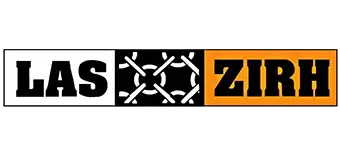Tire Chain Installation Guide for OTR Tires with Las Zirh
Las Zirh Tire Protection Chains are designed specifically for OTR tires, which are frequently subjected to abrasive and punishing environments like mining, quarrying, and hot slag processing. These chains provide a robust barrier against the harsh elements that tires encounter, extending their lifespan significantly. Whether you’re working in rocky quarries or handling molten slag, Las Zirh’s chains are engineered to deliver maximum protection.
Tire chain installation is a critical process that directly impacts the performance and durability of your OTR tires. Improper installation can lead to premature wear, reduced traction, and even tire failure, making it essential to follow a precise and thorough installation procedure.
Importance of Proper Tire Chain Installation
The importance of correct tire chain installation cannot be overstated. Properly installed chains ensure that the tire is shielded from sharp rocks, debris, and other hazardous materials that could cause irreparable damage. Additionally, correctly tensioned chains improve traction and stability, which is crucial for heavy machinery operating in treacherous conditions.
Installing tire chains correctly also helps in maintaining the safety of the vehicle and its operators. Chains that are too loose can slip, potentially causing accidents or vehicle damage, while overly tight chains may exert excessive pressure on the tires, leading to rapid wear.
Pre-Installation Preparations
Selecting the Right Tire Chain
Choosing the appropriate tire chain for your specific OTR tires is the first step in ensuring successful installation. Las Zirh offers a variety of chains designed for different applications, including mining, quarrying, and hot slag handling. When selecting your chains, consider the tire size, tread pattern, and operational environment.
Inspecting the Tire and Wheel Assembly
Before beginning the tire chain installation process, it’s crucial to thoroughly inspect the tire and wheel assembly. Check for any existing damage, such as cuts, punctures, or uneven wear, which could compromise the chain’s performance. Ensure that the tire pressure is within the manufacturer’s recommended range.
Gathering Required Tools and Safety Gear
Proper tools and safety gear are necessary for a smooth and safe installation process. Essential tools include tire chain pliers, tensioning tools, and hooks or latches for securing the chains. Safety gear, such as gloves, eye protection, and steel-toed boots, should be worn to protect against potential injuries.
Step-by-Step Guide to Tire Chain Installation
Positioning the Tire Chains
Start by laying the tire chains flat on the ground, ensuring they are not twisted or tangled. The cross-links should be evenly spaced, and the chains should be centered with the tire’s tread. This positioning will make the subsequent steps easier and ensure the chains fit correctly.
Mounting the Tire Chains on OTR Tires
With the chains properly positioned, drive the vehicle slowly forward or backward so that the tire rolls over the chains. Once the tire is centered over the chains, begin pulling the chains up and over the tire. Make sure the chains are evenly distributed across the tire’s surface.
Securing the Tire Chains
Once the chains are in place, start fastening them using the provided hooks or latches. Secure the inside of the chain first, followed by the outside. The chains should be snug but not overly tight. Use a tensioning tool to adjust the chain’s tightness, ensuring it conforms closely to the tire’s shape without restricting its movement.
Adjusting and Tensioning the Chains
After securing the chains, it’s important to check their tension. Proper tensioning prevents the chains from slipping or becoming too loose during operation. Adjust the tension until the chains are tight enough to stay in place, but not so tight that they cut into the tire or cause undue stress on the chain links.
Post-Installation Checks
Ensuring Proper Fit and Tension
Once the tire chains are installed, perform a final check to ensure they fit correctly. Walk around the vehicle to inspect each tire, confirming that the chains are evenly tensioned and secure. If any sections appear loose or uneven, make the necessary adjustments.
Test Driving with Tire Chains
Before fully deploying the vehicle in its operational environment, conduct a short test drive. This will allow you to observe the chains in action and make any final adjustments. Listen for any unusual sounds, such as clinking or dragging, which may indicate improper installation.
Regular Maintenance and Inspection
Even after a successful installation, it’s important to regularly inspect and maintain your tire chains. Check for signs of wear or damage after each use, especially if operating in particularly harsh conditions. Regular maintenance will prolong the life of both your chains and your tires.

Common Challenges During Tire Chain Installation
Handling Large and Heavy Chains
One of the most common challenges during tire chain installation is managing the size and weight of the chains. OTR tire chains are typically large and heavy, requiring significant physical effort to position and secure. Using the right tools and following safety protocols can mitigate this challenge.
Adjusting Chains on Worn Tires
Another challenge is installing chains on tires that have already experienced wear. Worn tires may have uneven surfaces or reduced tread depth, making it harder to achieve a secure fit. In such cases, additional tensioning and adjustment may be necessary.
Ensuring Chain Longevity in Extreme Conditions
Operating in extreme environments, such as hot slag handling or rocky quarries, can cause accelerated wear on tire chains. Ensuring that chains are installed correctly and maintaining them regularly can help extend their lifespan, even in the most challenging conditions.
Las Zirh: The Preferred Choice for OTR Tire Chains
Las Zirh Tire Protection Chains have earned a reputation for quality and reliability in the most demanding industries. Their innovative design and durable materials make them the preferred choice for protecting OTR tires in harsh environments. Whether you’re operating in a mine, quarry, or dealing with hot slag, Las Zirh chains provide the protection your tires need to perform at their best.












